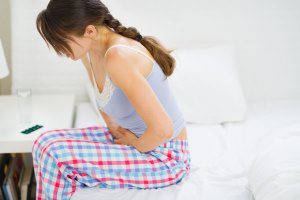 Endometriosis affects five to seven million women in the United States, which is approximately 10% of the female reproductive-age population. Endometriosis Awareness Month is an opportunity to educate them and the public about the symptoms and treatment of this disease as well as about therapies available to help alleviate its painful features.
Endometriosis affects five to seven million women in the United States, which is approximately 10% of the female reproductive-age population. Endometriosis Awareness Month is an opportunity to educate them and the public about the symptoms and treatment of this disease as well as about therapies available to help alleviate its painful features.
Endometriosis occurs when displaced tissue, similar to what is found in the uterine (endometrium) lining, attaches itself to different places in the pelvic region. Sometimes, it travels to organs in the digestive tract and bladder and, rarely, to distant areas like the liver and lungs. The fallopian tubes, peritoneum, and ovaries are the most commonly affected areas. A doctor will confirm the physical clues leading to an endometriosis diagnosis through a pelvic exam, ultrasound or laparoscopic surgery.
Unfortunately, one of the most common symptoms of endometriosis is intense chronic pain that can last throughout the month. Endometriosis sufferers may have painful periods, pelvic pain between periods and pain with sex. Many women experience these symptoms for years before being correctly diagnosed. Also, the stage of endometriosis, such as the severity of lesions, scarring, and adhesions, is not directly correlated to the amount of pain a woman may experience. However, not every woman who has painful periods has endometriosis.
Pain: one of the first indications of endometriosis
Pain is the most common symptom of endometriosis and is more than period pain. It can occur in several forms, including painful menstrual cramps that worsen over time, chronic lower back and pelvic pain, pain during and after sex and painful bowel movements and urination.
The causes of endometriosis pain
Pain occurs because endometriosis growths outside the uterus, also called lesions or implants, increase in size and bleed just like the lining of the uterus does during a period. However, there is no outlet to shed the blood, which causes swelling, inflammation and, subsequent pain.
Endometrial lesions can cause a myriad of other problems such as the formation of cysts in the fallopian tubes from trapped blood, the development of scar tissue and adhesions that cause pain and infertility, and intestinal and urination issues.
Pain relief
Depending on the severity of the pain, adhesions, inflammation and other symptoms in women who eventually want to become pregnant, some of the approaches a doctor may recommend to stop pain and reduce the size of the endometriosis implants include:
- Nonsteroidal anti-inflammatory drugs (NSAIDs), such as Ibuprofen and Naproxen, which are first-line treatments that can help decrease the production of the prostaglandins causing pain, but don’t resolve the endometrial implants.
- Gonadotropin-releasing hormone analogs (GnRH analogs) will stop a woman’s menstrual cycle, mimicking menopause. This medication both will reduce pain and the size of the endometrial growths. Often progesterone is added back to the regimen to reduce the unpleasant menopause-like side effects of GnRH analogs.
- Oral contraceptives, a combination of estrogen and progesterone, also can stop pain and implant growth. Women may take them throughout the month, skipping the placebo pills that start a period.
- Surgery, often laparoscopic, is used to excise the lesions but is no guarantee they won’t return.
IVF helps patients get pregnant; pregnancy can reduce symptoms
For patients anxious to achieve a pregnancy, IVF may be their best option. Success rates are comparable to those obtained for other causes of infertility but vary by a female’s age.
Some endometriosis sufferers find that pregnancy may alleviate their endometriosis symptoms, at least, temporarily.
Endometriosis is a complex and often intensely painful disease that can be frustrating for patients until an infertility specialist diagnoses and treats it appropriately. No woman, however, should accept pain as a regular part of her life when there are therapies to help her.
Resources:
https://www.womenshealth.gov/a-z-topics/endometriosis
https://www.medicinenet.com/endometriosis/article.htm
